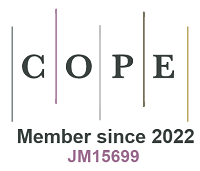REFERENCES
1. Fujishima, A.; Honda, K. Electrochemical photolysis of water at a semiconductor electrode. Nature 1972, 238, 37-8.
2. Zhang, H.; Chen, D.; Lv, X.; Wang, Y.; Chang, H.; Li, J. Energy-efficient photodegradation of azo dyes with TiO2 nanoparticles based on photoisomerization and alternate UV-visible light. Environ. Sci. Technol. 2010, 44, 1107-11.
3. Hashimoto, K.; Hiramoto, M.; Sakata, T. Temperature-independent electron-transfer: Rhodamine B/oxide semiconductor dye-sensitization system. J. Phys. Chem. 1988, 92, 4272-4.
4. Basavarajappa, P. S.; Patil, S. B.; Ganganagappa, N.; Reddy, K. R.; Raghu, A. V.; Reddy, C. V. Recent progress in metal-doped TiO2, non-metal doped/codoped TiO2 and TiO2 nanostructured hybrids for enhanced photocatalysis. Int. J. Hydrogen. Energy. 2020, 45, 7764-78.
5. Paola, A. D.; Ikeda, S.; Marcì, G.; Ohtani, B.; Palmisano, L. Transition metal doped TiO2: physical properties and photocatalytic behaviour. Int. J. Photoenergy. 2001, 3, 171-6.
6. Wang, B.; Shen, S.; Mao, S. S. Black TiO2 for solar hydrogen conversion. J. Materiomics. 2017, 3, 96-111.
7. Zhang, K.; Park, J. H. Surface localization of defects in black TiO2: enhancing photoactivity or reactivity. J. Phys. Chem. Lett. 2017, 8, 199-207.
8. Erdural, B.; Bolukbasi, U.; Karakas, G. Photocatalytic antibacterial activity of TiO2–SiO2 thin films: the effect of composition on cell adhesion and antibacterial activity. J. Photochem. Photobiol. A. Chem. 2014, 283, 29-37.
9. Ya, J.; Yang, N.; Hu, F.; Liu, Z.; E, L. Preparation and activity evaluation of TiO2/Cu-TiO2 composite catalysts. J. Sol. Gel. Sci. Technol. 2015, 73, 322-31.
10. Chen, F.; Zhao, J.; Hidaka, H. Highly selective deethylation of rhodamine B: adsorption and photooxidation pathways of the dye on the TiO2/SiO2 composite photocatalyst. Int. J. Photoenergy. 2003, 5, 209-17.
11. Liu, Z.; Sun, L.; Zhang, Q.; Teng, Z.; Sun, H.; Su, C. TiO2-supported single-atom catalysts: synthesis, structure, and application. Chem. Res. Chin. Univ. 2022, 38, 1123-38.
12. Janisch, R.; Gopal, P.; Spaldin, N. A. Transition metal-doped TiO2 and ZnO - present status of the field. J. Phys. Condens. Matter. 2005, 17, R657-89.
13. Song, H.; Li, C.; Lou, Z.; Ye, Z.; Zhu, L. Effective formation of oxygen vacancies in black TiO2 nanostructures with efficient solar-driven water splitting. ACS. Sustainable. Chem. Eng. 2017, 5, 8982-7.
14. Hejazi, S.; Killian, M. S.; Mazare, A.; Mohajernia, S. Single-atom-based catalysts for photocatalytic water splitting on TiO2 nanostructures. Catalysts 2022, 12, 905.
15. Tomboc, G. M.; Kim, T.; Jung, S.; Yoon, H. J.; Lee, K. Modulating the local coordination environment of single-atom catalysts for enhanced catalytic performance in hydrogen/oxygen evolution reaction. Small 2022, 18, e2105680.
16. Lee, B. H.; Park, S.; Kim, M.; et al. Reversible and cooperative photoactivation of single-atom Cu/TiO2 photocatalysts. Nat. Mater. 2019, 18, 620-6.
17. Wang, H.; Qi, H.; Sun, X.; et al. High quantum efficiency of hydrogen production from methanol aqueous solution with PtCu-TiO2 photocatalysts. Nat. Mater. 2023, 22, 619-26.
18. Fang, Y.; Zhang, Q.; Zhang, H.; et al. Dual activation of molecular oxygen and surface lattice oxygen in single atom Cu1/TiO2 catalyst for CO oxidation. Angew. Chem. Int. Ed. Engl. 2022, 61, e202212273.
19. Iyemperumal, S. K.; Pham, T. D.; Bauer, J.; Deskins, N. A. Quantifying support interactions and reactivity trends of single metal atom catalysts over TiO2. J. Phys. Chem. C. 2018, 122, 25274-89.
20. Qi, R.; Zhu, B.; Han, Z.; Gao, Y. High-throughput screening of stable single-atom catalysts in CO2 reduction reactions. ACS. Catal. 2022, 12, 8269-78.
21. De, S.; Dokania, A.; Ramirez, A.; Gascon, J. Advances in the design of heterogeneous catalysts and thermocatalytic processes for CO2 utilization. ACS. Catal. 2020, 10, 14147-85.
22. Hu, G.; Wu, Z.; Jiang, D. First principles insight into H2 activation and hydride species on TiO2 surfaces. J. Phys. Chem. C. 2018, 122, 20323-8.
23. Liu, P.; Zhao, Y.; Qin, R.; et al. Photochemical route for synthesizing atomically dispersed palladium catalysts. Science 2016, 352, 797-801.
24. Hu, J.; Kim, E. M.; Janik, M. J.; Alexopoulos, K. Hydrogen activation and spillover on anatase TiO2-supported Ag single-atom catalysts. J. Phys. Chem. C. 2022, 126, 7482-91.
25. Li, D.; Zhao, Y.; Miao, Y.; et al. Accelerating electron-transfer dynamics by TiO2-immobilized reversible single-atom copper for enhanced artificial photosynthesis of urea. Adv. Mater. 2022, 34, e2207793.
26. Guo, Y.; Huang, Y.; Zeng, B.; et al. Photo-thermo semi-hydrogenation of acetylene on Pd1/TiO2 single-atom catalyst. Nat. Commun. 2022, 13, 2648.
27. Kim, S. S.; Lee, H. H.; Hong, S. C. The effect of the morphological characteristics of TiO2 supports on the reverse water–gas shift reaction over Pt/TiO2 catalysts. Appl. Catal. B. Environ. 2012, 119-20, 100-8.
28. Chen, L.; Unocic, R. R.; Hoffman, A. S.; et al. Unlocking the catalytic potential of TiO2-supported Pt single atoms for the reverse water-gas shift reaction by altering their chemical environment. JACS. Au. 2021, 1, 977-86.
29. Nelson, N. C.; Chen, L.; Meira, D.; Kovarik, L.; Szanyi, J. In situ dispersion of palladium on TiO2 during reverse water–gas shift reaction: formation of atomically dispersed palladium. Angew. Chem. Int. Ed. Engl. 2020, 132, 17810-6.
30. Astruc, D.; Lu, F.; Aranzaes, J. R. Nanoparticles as recyclable catalysts: the frontier between homogeneous and heterogeneous catalysis. Angew. Chem. Int. Ed. Engl. 2005, 44, 7852-72.
31. Byrne, C.; Moran, L.; Hermosilla, D.; et al. Effect of Cu doping on the anatase-to-rutile phase transition in TiO2 photocatalysts: theory and experiments. Appl. Catal. B. Environ. 2019, 246, 266-76.
32. Cheng, C.; Fang, W. H.; Long, R.; Prezhdo, O. V. Water splitting with a single-atom Cu/TiO2 photocatalyst: atomistic origin of high efficiency and proposed enhancement by spin selection. JACS. Au. 2021, 1, 550-9.
33. Cao, Z.; Tsai, S. N.; Zuo, Y. Y. An optical method for quantitatively determining the surface free energy of micro- and nanoparticles. Anal. Chem. 2019, 91, 12819-26.
34. Chen, X.; Liu, L.; Yu, P. Y.; Mao, S. S. Increasing solar absorption for photocatalysis with black hydrogenated titanium dioxide nanocrystals. Science 2011, 331, 746-50.
35. Kim, A.; Sanchez, C.; Haye, B.; Boissière, C.; Sassoye, C.; Debecker, D. P. Mesoporous TiO2 support materials for Ru-based CO2 methanation catalysts. ACS. Appl. Nano. Mater. 2019, 2, 3220-30.
36. Martell, S. A.; Werner-Zwanziger, U.; Dasog, M. The influence of hydrofluoric acid etching processes on the photocatalytic hydrogen evolution reaction using mesoporous silicon nanoparticles. Faraday. Discuss. 2020, 222, 176-89.
37. Kirshenbaum, M. J.; Richter, M. H.; Dasog, M. Electrochemical water oxidation in acidic solution using titanium diboride (TiB2) catalyst. ChemCatChem 2019, 11, 3877-81.
38. Gelderman, K.; Lee, L.; Donne, S. W. Flat-band potential of a semiconductor: using the Mott–Schottky equation. J. Chem. Educ. 2007, 84, 685.
39. Balu, S.; Chen, Y. L.; Chen, S. W.; Yang, T. C. K. Rational synthesis of BixFe1-xVO4 heterostructures impregnated sulfur-doped
40. Kautek, W.; Gerischer, H. Photoelectrochemical reactions and formation of inversion layers at n-type MoS2-, MoSe2-, and WSe2-electrodes in aprotic solvents. Ber. Bunsenges. Phys. Chem. 1980, 84, 645-53.
41. Feenstra, R. M.; Stroscio, J. A. Tunneling spectroscopy of the GaAs(110) surface. J. Vac. Sci. Technol. B. 1987, 5, 923-9.
42. Seger, B.; Tilley, S. D.; Pedersen, T.; et al. Silicon protected with atomic layer deposited TiO2: conducting versus tunnelling through TiO2. J. Mater. Chem. A. 2013, 1, 15089.
43. Yin, M.; Li, Z.; Kou, J.; Zou, Z. Mechanism investigation of visible light-induced degradation in a heterogeneous TiO2/eosin Y/rhodamine B system. Environ. Sci. Technol. 2009, 43, 8361-6.
44. Jo, W. K.; Kim, Y. G.; Tonda, S. Hierarchical flower-like NiAl-layered double hydroxide microspheres encapsulated with black Cu-doped TiO2 nanoparticles: highly efficient visible-light-driven composite photocatalysts for environmental remediation. J. Hazard. Mater. 2018, 357, 19-29.
45. Zhang, D.; Qiu, R.; Song, L.; Eric, B.; Mo, Y.; Huang, X. Role of oxygen active species in the photocatalytic degradation of phenol using polymer sensitized TiO2 under visible light irradiation. J. Hazard. Mater. 2009, 163, 843-7.
46. Yuan, G.; Meng, Z.; Li, Y. A modified hestenes and stiefel conjugate gradient algorithm for large-scale nonsmooth minimizations and nonlinear equations. J. Optim. Theory. Appl. 2016, 168, 129-52.
47. Mato, J.; Guidez, E. B. Accuracy of the PM6 and PM7 methods on bare and thiolate-protected gold nanoclusters. J. Phys. Chem. A. 2020, 124, 2601-15.
49. Li, G.; Dimitrijevic, N. M.; Chen, L.; Rajh, T.; Gray, K. A. Role of surface/interfacial Cu2+ sites in the photocatalytic activity of coupled CuO−TiO2 nanocomposites. J. Phys. Chem. C. 2008, 112, 19040-4.
50. Moniz, S. J. A.; Tang, J. Charge transfer and photocatalytic activity in CuO/TiO2 nanoparticle heterojunctions synthesised through a rapid, one-pot, microwave solvothermal route. ChemCatChem 2015, 7, 1659-67.
51. Bhattacharyya, K.; Mane, G. P.; Rane, V.; Tripathi, A. K.; Tyagi, A. K. Selective CO2 photoreduction with Cu-doped TiO2 photocatalyst: delineating the crucial role of Cu-oxidation state and oxygen vacancies. J. Phys. Chem. C. 2021, 125, 1793-810.
52. Setvín, M.; Aschauer, U.; Scheiber, P.; et al. Reaction of O2 with subsurface oxygen vacancies on TiO2 anatase (101). Science 2013, 341, 988-91.
53. Bredow, T.; Pacchioni, G. Electronic structure of an isolated oxygen vacancy at the TiO2(110) surface. Chem. Phys. Lett. 2002, 355, 417-23.
54. Pacchioni, G. Oxygen vacancy: the invisible agent on oxide surfaces. Chemphyschem 2003, 4, 1041-7.
55. You, M.; Kim, T. G.; Sung, Y. Synthesis of Cu-doped TiO2 nanorods with various aspect ratios and dopant concentrations. Cryst. Growth. Des. 2010, 10, 983-7.
56. Kang, L.; Wang, B.; Bing, Q.; et al. Adsorption and activation of molecular oxygen over atomic copper(I/II) site on ceria. Nat. Commun. 2020, 11, 4008.
57. Colón, G.; Maicu, M.; Hidalgo, M.; Navío, J. Cu-doped TiO2 systems with improved photocatalytic activity. Appl. Catal. B. Environ. 2006, 67, 41-51.
58. Takanabe, K. Photocatalytic water splitting: quantitative approaches toward photocatalyst by design. ACS. Catal. 2017, 7, 8006-22.
59. Choudhury, B.; Dey, M.; Choudhury, A. Defect generation, d-d transition, and band gap reduction in Cu-doped TiO2 nanoparticles. Int. Nano. Lett. 2013, 3, 52.
60. Rengifo-Herrera, J. A.; Pulgarin, C. Why five decades of massive research on heterogeneous photocatalysis, especially on TiO2, has not yet driven to water disinfection and detoxification applications? Critical review of drawbacks and challenges. Chem. Eng. J. 2023, 477, 146875.
61. Kandoth, N.; Chaudhary, S. P.; Gupta, S.; et al. Multimodal biofilm inactivation using a photocatalytic bismuth perovskite-TiO2-Ru(II)polypyridyl-based multisite heterojunction. ACS. Nano. 2023, 17, 10393-406.
62. Wu, T.; Lin, T.; Zhao, J.; Hidaka, H.; Serpone, N. TiO2-assisted photodegradation of dyes. 9. Photooxidation of a squarylium cyanine dye in aqueous dispersions under visible light irradiation. Environ. Sci. Technol. 1999, 33, 1379-87.
63. Amorelli, A.; Evans, J. C.; Rowlands, C. C. Electron paramagnetic resonance study of the effect of temperature upon copper-impregnated titanium dioxide powders. J. Chem. Soc. Faraday. Trans. 1. 1989, 85, 4111.
64. Shi, X.; Lin, Y.; Huang, L.; et al. Copper catalysts in semihydrogenation of acetylene: from single atoms to nanoparticles. ACS. Catal. 2020, 10, 3495-504.
65. Zhang, Y.; Zhao, J.; Wang, H.; et al. Single-atom Cu anchored catalysts for photocatalytic renewable H2 production with a quantum efficiency of 56. Nat. Commun. 2022, 13, 58.
66. Zhao, Y.; Zhao, Y.; Shi, R.; et al. Tuning oxygen vacancies in ultrathin TiO2 nanosheets to boost photocatalytic nitrogen fixation up to 700 nm. Adv. Mater. 2019, 31, e1806482.
67. Zhao, Y.; Zhao, Y.; Waterhouse, G. I. N.; et al. Layered-double-hydroxide nanosheets as efficient visible-light-driven photocatalysts for dinitrogen fixation. Adv. Mater. 2017, 29, 1703828.
68. Dohshi, S.; Anpo, M.; Okuda, S.; Kojima, T. Effect of γ-ray Irradiation on the Wettability of TiO2 single crystals. Top. Catal. 2005, 35, 327-30.
69. Pan, C.; Shen, H.; Liu, G.; et al. CuO/TiO2 nanobelt with oxygen vacancies for visible-light-driven photocatalytic bacterial inactivation. ACS. Appl. Nano. Mater. 2022, 5, 10980-90.
70. Nakamura, R.; Nakato, Y. Molecular mechanism of water oxidation reaction at photo-irradiated TiO2 and related metal oxide surfaces. Solid. State. Phenom. 2010, 162, 1-27.
71. Nosaka, Y.; Nosaka, A. Understanding hydroxyl radical (•OH) generation processes in photocatalysis. ACS. Energy. Lett. 2016, 1, 356-9.
72. Kim, B.; Jeong, D.; Ohta, T.; Cho, J. Nucleophilic reactivity of a copper(II)-hydroperoxo complex. Commun. Chem. 2019, 2, 187.
73. Nosaka, Y.; Nosaka, A. Y. Generation and detection of reactive oxygen species in photocatalysis. Chem. Rev. 2017, 117, 11302-36.
74. Nosaka, Y.; Daimon, T.; Nosaka, A. Y.; Murakami, Y. Singlet oxygen formation in photocatalytic TiO2 aqueous suspension. Phys. Chem. Chem. Phys. 2004, 6, 2917.
75. Jakimińska, A.; Pawlicki, M.; Macyk, W. Photocatalytic transformation of Rhodamine B to Rhodamine-110 - the mechanism revisited. J. Photochem. Photobiol. A. Chem. 2022, 433, 114176.
76. Wu, T.; Liu, G.; Zhao, J.; Hidaka, H.; Serpone, N. Photoassisted degradation of dye pollutants. V. Self-photosensitized oxidative transformation of Rhodamine B under visible light irradiation in aqueous TiO2 dispersions. J. Phys. Chem. B. 1998, 102, 5845-51.
77. Skjolding, L. M.; Jørgensen, L. V.; Dyhr, K. S.; et al. Assessing the aquatic toxicity and environmental safety of tracer compounds Rhodamine B and Rhodamine WT. Water. Res. 2021, 197, 117109.
78. Jańczyk, A.; Krakowska, E.; Stochel, G.; Macyk, W. Singlet oxygen photogeneration at surface modified titanium dioxide. J. Am. Chem. Soc. 2006, 128, 15574-5.
79. Curry, D. E.; Andrea, K. A.; Carrier, A. J.; et al. Surface interaction of doxorubicin with anatase determines its photodegradation mechanism: insights into removal of waterborne pharmaceuticals by TiO2 nanoparticles. Environ. Sci. Nano. 2018, 5, 1027-35.








